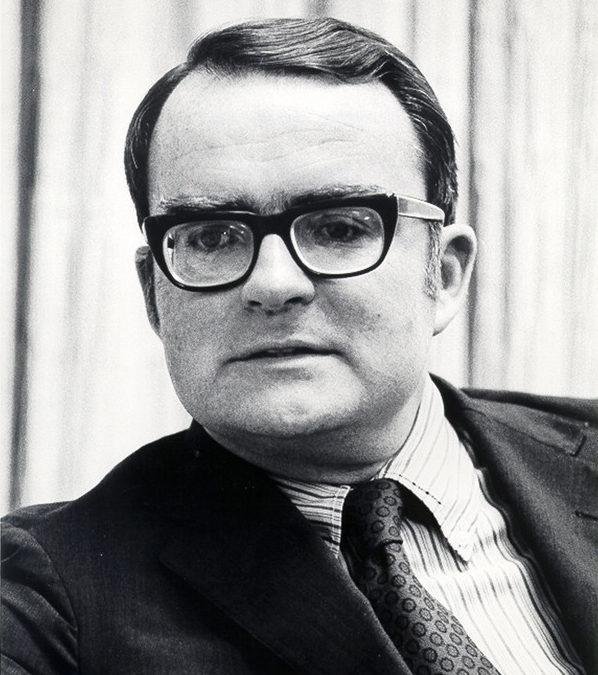
What Happened to Toxicity Testing?
My plan for Water Quality Standards (WQS) regulatory reform in 1981 was to re-promulgate reformed WQS and Water Quality Management (WQM) regulations first, then issue a stand-alone Federal Register notice proposing the use of whole effluent toxicity testing. Both were the basis for testing the impacts of municipal and industrial pollution dischargers on aquatic life in receiving streams. We would then require dischargers to conduct testing and do an internal audit to reduce chemical loads, which, alone or synergistically with other chemicals present, had an adverse toxic impact on test species and therefore be a violation of their discharge permit. This could be accomplished in the permit process and provide a meaningful deterrent effect.
The germ for this idea was the LWRCOG water quality management planning study I directed between 1975–1978. I met an aquatic biologist from the U.S. Fish and Wildlife Service assigned to the intergovernmental In-Stream Flow Group, stationed at Colorado State University in Fort Collins. In this context, I learned of the LC50 whole effluent toxicity test procedure involving the most sensitive species, trout fry. As I reported earlier in this book, one of my first calls was to Lee Tebow of the Athens, Georgia laboratory with whom I had worked when a young engineer at the Federal Water Quality Administration in 1970. Lee confirmed his staff was looking at whole effluent toxicity testing from a technical perspective as a means of measuring toxicity effects on aquatic life. He did not have a policy framework for this idea. However, as Tom Jorling’s Presumptive Applicability Policy seemed to trump all other considerations, unless the Athens Laboratory was called to evaluate numeric criteria proposed by a state at variance with the Red Book or the Blue Book water quality criteria recommendations.
Apart from trying to do too much at once, I was also very concerned, first, that the cost of conducting whole effluent toxicity tests alone might be “expensive.” Municipalities would balk at a time when we were trying to reduce paperwork demands through regulations.[1] Second, what if everybody failed the test? We needed to investigate this before we moved on it. To use an old Navy term, “That would throw a monkey wrench into the reduction gears” and halt everything. In short, my intuition said, Hold off!
Not long after I left office in the late spring of 1983, my deputy Rebecca Hanmer, in concert with Al Alm, her old friend and EPA deputy administrator under Ruckelshaus II, issued an EPA toxicity testing policy in the Federal Register. This preceded the final promulgation of EPA’s WQS reforms. Optically, it was probably a good thing to distinguish Ruckelshaus from Gorsuch, as everything I proposed came under extreme criticism in the media. And orchestrated by the environmental lobby. It would have been another element of the “Dirty Water Agenda” that my critics accused me of. The final WQS regulation signed by William Ruckelshaus was issued on Tuesday, November 8, 1983. It included a provision that states had to explain how they would implement the “free from toxic substances in toxic amounts” and gave examples, including bioassays, biosurveys, or whole effluent toxicity testing.
An interesting backstory here worth telling is that Anne Gorsuch had reassigned Rebecca Hanmer from Region 4 Administrator, a job my old friend and Deputy Administrator Barbara Blum gave her and went to work for John Horton, Gorsuch’s AA for Administration. She worked with Horton from the spring of 1981 until a few weeks after I was sworn into office in April 1982. I had been assistant administrator-in-waiting since September 1981. Therefore, Rebecca did not know my thoughts regarding reforming WQS, and also did not participate in the many staff meetings I had before my confirmation. Most of the key policy decisions had been made before she was on board. That was regrettable as Rebecca, like me, believed wholeheartedly that WQS were if vital importance and the last defense to protect beneficial uses and water quality.
Her job for Horton was to write “performance standards” for SES personnel, as provided under the 1978 Civil Service Reform Act. As noted in the previous chapter, these standards became fundamental to my Office of Water Operating Guidance and Accountability System as they were a means of connecting performance to specific goals or actions.
When the first year of her new assignment as my Deputy AA for Water was subject to a face-to-face evaluation and dialogue regarding her performance under the standards we had mutually agreed to upon her hiring. She offered, “I do not believe that it would be appropriate to award me any bonus this year. I don’t think I deserve it, particularly in light of my role in overseeing all SES performance reviews in the Office of Water.” I didn’t argue with her. Rebecca had great personal integrity, but I was extremely grateful to her for pushing through many of my initiatives. I felt I needed to reward her for her loyalty and then found the perfect opportunity. I had been coordinating with Peter Wise on the subject of toxicity testing. Peter had a role in staffing various international events, including the Great Lakes Treaty and the London Dumping Convention. I first met Peter at EPA’s Financial Management Assistance Program (FMAP). My partnership, BMML, had participated in FMAP with Peat, Marwick, Mitchell & Co. under a grant issued to the Municipal Finance Officers Association. Peter was assigned to the Water Quality Standards and Planning Division. I believe it was at my request that he brokered a meeting between Don Mount of our Cincinnati Laboratory and Lee Tebow. I knew Lee from my days at Region 4 in the early 1970s but had never met Don Mount, though I knew him by the high esteem he was held within EPA. Both had been investigating whole effluent toxicity testing as another tool in our arsenal to control water pollution based on the best science available. I decided definitively to proceed with this initiative, but only after we had shifted the paradigm on WQS through regulatory reform.
There was an upcoming technical meeting of the OECD (Organization of Economic Co-operation and Development) in Paris. Founded in 1961, the OECD was created to avoid the mistakes made after WWI regarding the rebuilding of Europe. The OECD’s committee on the environment had an upcoming technical meeting scheduled in Paris. I asked Rebecca if she would like to represent EPA at this meeting, and she enthusiastically replied, “Yes!” Peter Wise prepared a briefing paper for Rebecca on whole effluent toxicity testing. Her report was a huge success, and as a consequence, she developed life-long relationships with many members of the OECD throughout Europe. The OECD and its members embraced this scientific protocol, and inadvertently the EPA, through Rebecca, had a significant impact in forwarding ambient environmental standards to protect water quality and toxicity testing to the European Union.
Fast-forward to the time Rebecca was again, in 1989, assigned Acting Assistant Administrator for Water. Owing to a fundamental disagreement with the newly-confirmed EPA Administrator William Reilly (February 1989 to January 1993) over the issue of the 404 veto of Colorado’s Two Forks Project, Rebecca left the EPA. Rebecca had planned to approve the 404 discharge permit for Two Forks, but Reilly had other ideas that had to do with garnering support from the Wildlife Federation – he was a Republican and needed political support from the environmental lobby to seal his confirmation. Under an intergovernmental personnel act arrangement that gave her civil service protections, she joined OECD and spent two decades in the international scene, then returned as director of the Chesapeake Bay Project. During this time, she bought two crumbling cliffside middle-aged houses built of local sandstone quarry rock and rebuilt her cliffside “La Clementine” at La Roque Gageac, high above the Dordogne River in southern France.

Rebecca and I had a brief telephone conversation in January 2021 about toxicity testing. She confirmed my intuition to delay promulgation of whole effluent toxicity testing until after the WQS reforms were finalized, but for a different reason that I considered. She related to me a story of her meeting with a young environmentalist from one of the Beltway environmental lobby organizations, who railed at her for this policy published in the Federal Register. According to Rebecca, the subject of scorn was that EPA was using dilution as a solution to pollution in the test itself. A travesty and contrary to the zero discharge goal of the Act. This has long been a practice in the water pollution control industry dating back to the 1960’s, one which EPA approved in individual State WQS submittals. Mixing Zones, and Zones of Passage were two administrative technical considerations employed by State or EPA permit writers in establishing water quality-based permit limitations on municipal and industrial discharges.
[1] I directed my Office of Regulations and Standards (OWRS) to conduct an analysis of the market price for a variety of chemical and biological testing methodologies, as well as the availability of laboratories that could conduct such analyses. EPA was certifying laboratories, such as that of the City of Fort Collins, to do chemical analysis. There was not yet a focus of certification of labs to undertake toxicity testing, although there were many university-based organizations engaged in bioassays and bio surveys. My impression (and recollection) of the report I received from OWRS indicated that the cost of bioassays was reasonable and could easily be absorbed by a wastewater utility.





